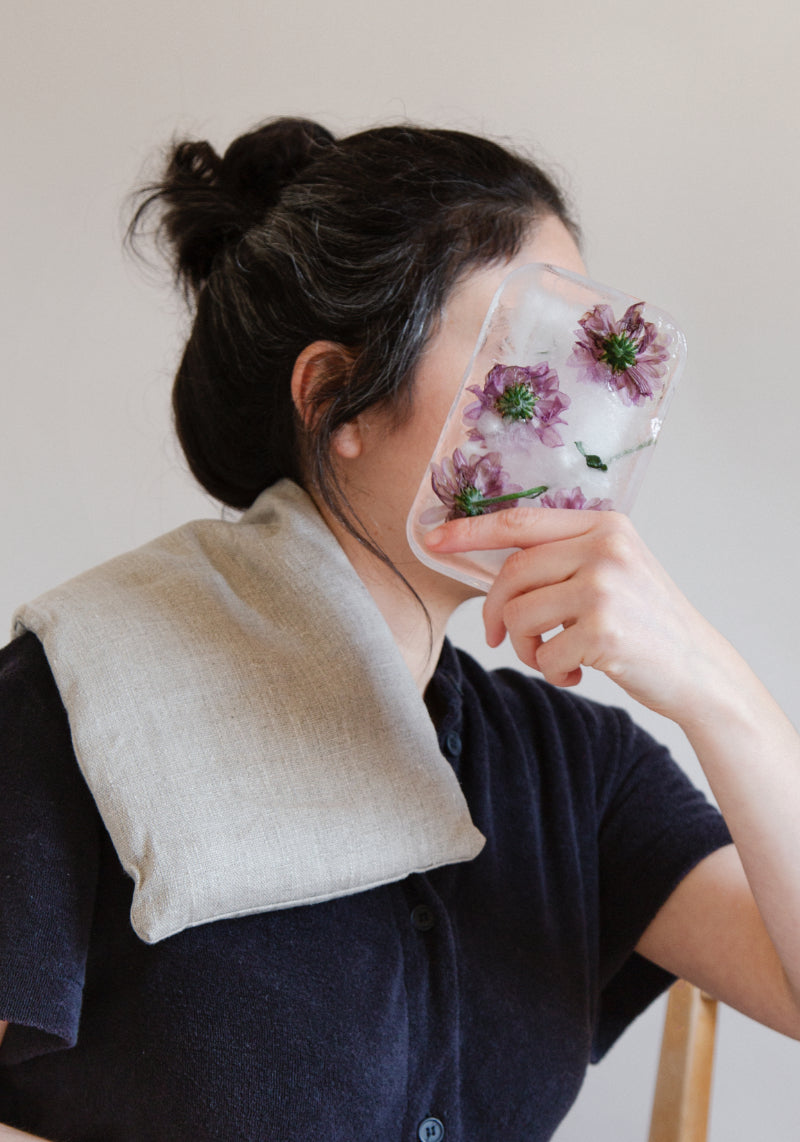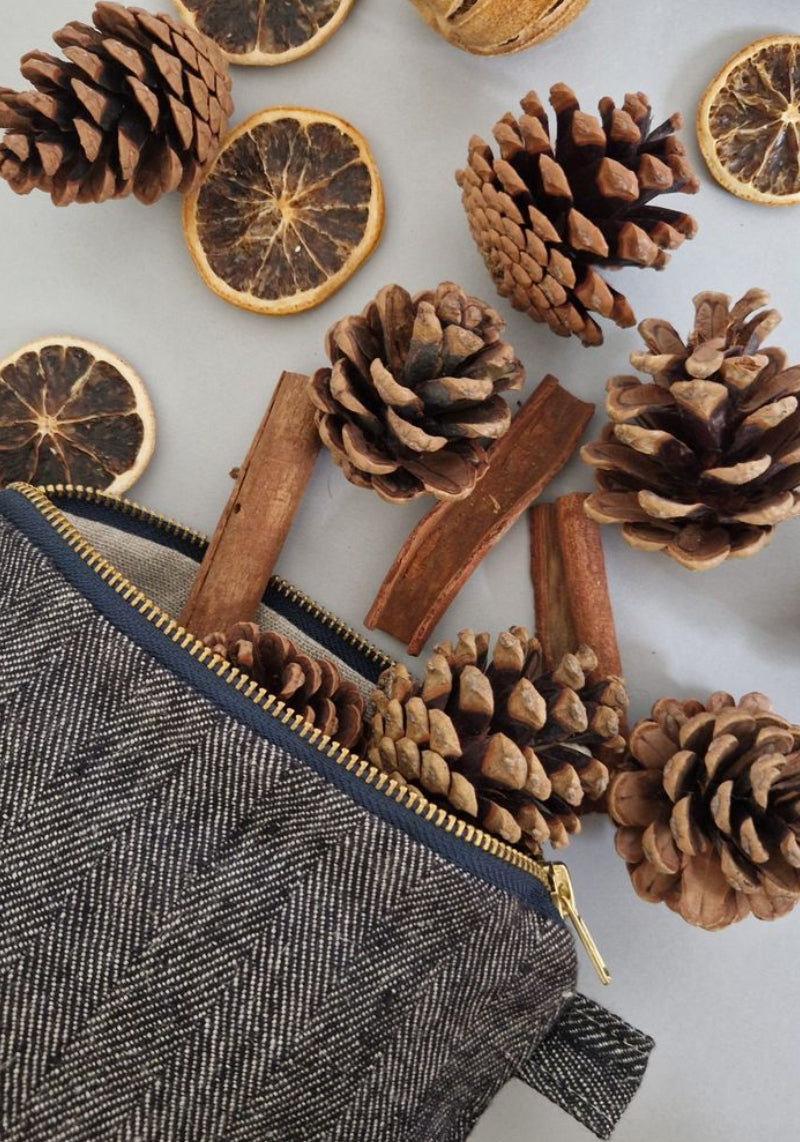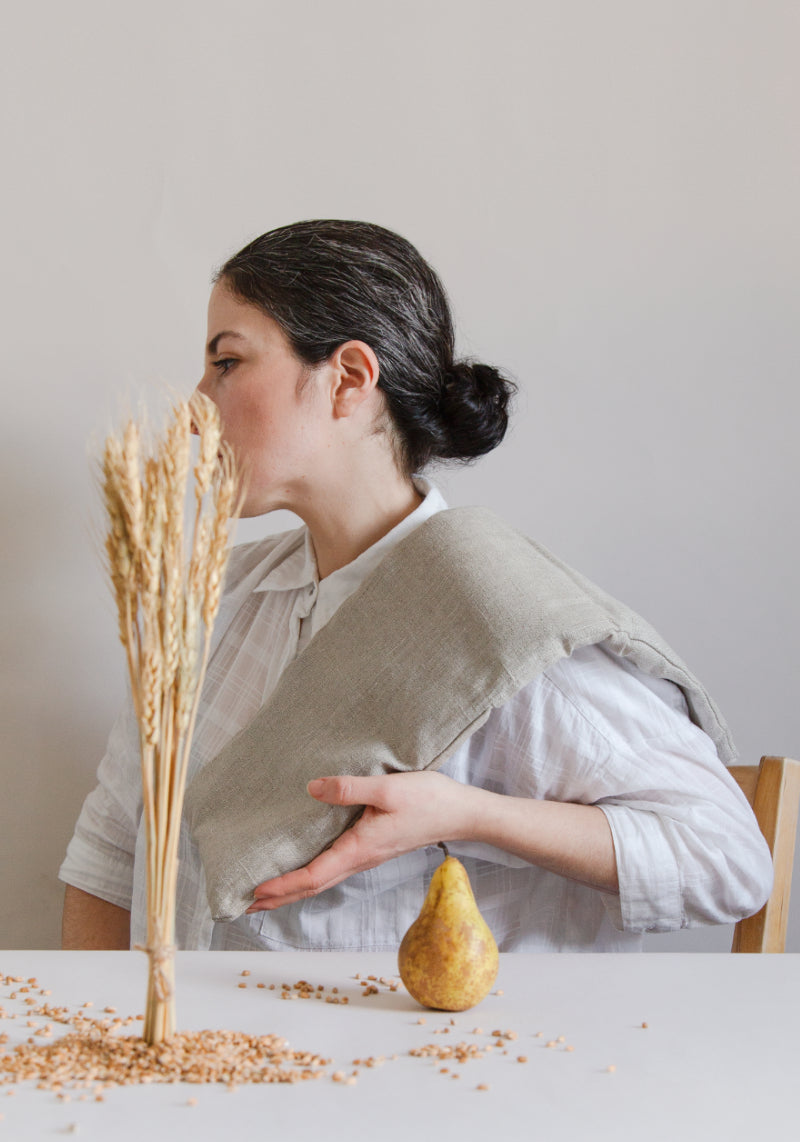Linen - A Naturally Sustainable Choice

Linen is our material of choice. But why do we use it and what makes it the sustainable option?

A passion for linen has been at the heart of our business from the beginning - choosing linen for the covers of our Wheat Bags and Eye Pillows and the sole material for our Wash Bags and Towels was an easy choice as there are so many positive attributes to this wonderful material.
Why Linen?
The soft, natural aesthetic of Linen is very much a part of our brand identity with its versatility, sustainable credentials and easy care all adding up to make it the perfect choice for Blasta Henriet products.

Linen is a sustainable fabric made from the stem of the flax plant. It's one of the earliest products known to civilisation.
Linen textiles appear to be some of the oldest in the world; their history goes back many thousands of years. Flax fibres have been cultivated in just about every country in the world for over 30,000 years.
Manufacturing linen certainly isn't an easy process. There are 12 stages that go into the process of creating Linen from seed to fabric. Some of them you may recognise, but you may be surprised by how niche the process can be:
- Plowing - flax linen grows in fertile well-drained soil. After winter a deep plowing is necessary for the planting of flax
- Sowing - the sowing of flax linen must be done very early in the morning on a windless day due to the very small size of the seed.
- Pulling - when flax linen is harvested it is pulled, rather than cut in order to obtain the longest fiber
- Stooking - By stooking the flax it dries evenly, verses laying it out in the sun. Higher quality fiber turns white when dried
- Rippling - this is the process used to deseed the flax. The top ends of the dry bundles of flax are pulled through nails hammered into a board
- Retting - retting is the process of rotting away the inner stalk using bacteria, leaving the outer fibers intact
- Breaking - once the fibers are loosened by retting the process of breaking is used to break up the inner woody stalk into smaller pieces so that it is separated from the flax
- Scutching - the broken shives that do not fall to the ground must be scutched out
- Hackling - this is the process that prepares the flax for spinning in which it is pulled through various different sized hackles
- Spinning - flax linen can either be spun from a distaff, or a spinner may simply lay flax fibers in their lap
- Weaving - weaving is the process in which the flax threads are interlaced to form the linen fabric
- Bleaching - linen is naturally a tan color which is then bleached white. After being bleached it can be dyed any color
Acknowledging all the steps that go into manufacturing linen certainly provides a new appreciation for this wonderfully versatile material.
Linen is two to three times stronger than cotton and dries at a quick rate. It also softens after each wash and stays strong over time, making it a perfect material for our linen towels and wheat bags.

Linen fabric feels cool to touch, a phenomenon which indicates its higher conductivity (the same principle that makes metals feel "cold"). It is smooth, making the finished fabric lint-free, and gets softer the more it is washed.
Linen's porteous nature has natural heat and moisture absorbing properties making it a great conductor of warmth. This is perfect for helping to naturally lock in heat and cold to help boost the effects of our Wheat Bags and Eye Pillows which offer natural pain relief and comfort all year round.
Linen absorbs moisture without holding bacteria - making it naturally anti-bacterial, thus being a popular choice for towels, bedding, wash bags, wheat bags and eye pillows.
Linen is a dense, yet permeable material and naturally resistant to dirt making it a go to for many occassions. The fabric provides light and breathable comfort, especially during the warmer months.
With this in mind, linen was always the obvious choice for our products and especially for our Eye Pillows which are designed to lie effortlessly cover the eye area, blocking out unwanted light, helping to soothe tired eyes and deepen your relaxation.
Linen and Sustainability
- linseed oil
- flaxseed oil
- flax seeds
For our unique creatures design, we use traditional rotary printing, which uses plain linen with Magnas eco friendly water based inks. You can see more about this in our journal post: Behind the scenes: printing our fabric.
Throughout our collection we use materials that are raw or natural, and certified free from chemicals and harmful dyes. Choosing a material that had a smaller impact on the environment was so important to us. And choosing a material that has a longer lifespan will, inevitably, be beneficial to you and the world around you.

Caring for Linen Products
Linen is a durable, timeless product than softens every time you use it.
Linen is relatively easy to take care of, since it resists dirt and stains, has no lint or pilling tendency, and can be dry-cleaned, machine-washed, or steamed. It can withstand high temperatures, and has only moderate initial shrinkage.
All linen covers for our wheat bags and eye pillows are detachable and can be washed in the machine or by hand. Use a mild detergent, wash at 30°c on a gentle setting. Avoid tumble drying, hot iron on non-printed area when dry.
Do not wash the inner bag with wheat grain inside.
All Wheat Packs come unscented and are suitable for sensitive skin.
To scent your wheat pack for the use of aromatherapy, add a few drops of essential oil to the inner bag after heating, alternatively dilute a few drops of oil in warm water to spray onto the bag.

Enjoying Linen products
We have found that once you start using linen, you really start to appreciate it's versatility in your day to day life. In Europe, linen is highly regarded as the best quality fabric you can use to enhance the lifespan of products.
As we head towards warmer seasons, we have made sure to pack our lovely Herringbone linen towels for trips away. These soft bath, beach and hand towels are made from 100% washed European linen and woven on traditional looms. One of the many reason that these are an excellent travel choice is that they are absorbent, lightweight and quick-drying - A handy and essential travel accessory.

We hope you can now feel a new appreciation for linen and have a deeper understanding of why we are so passionate about creating beautiful and long lasting products using this wonderful material.
You can read more about our supply chain and sustainability standards here on our journal.






